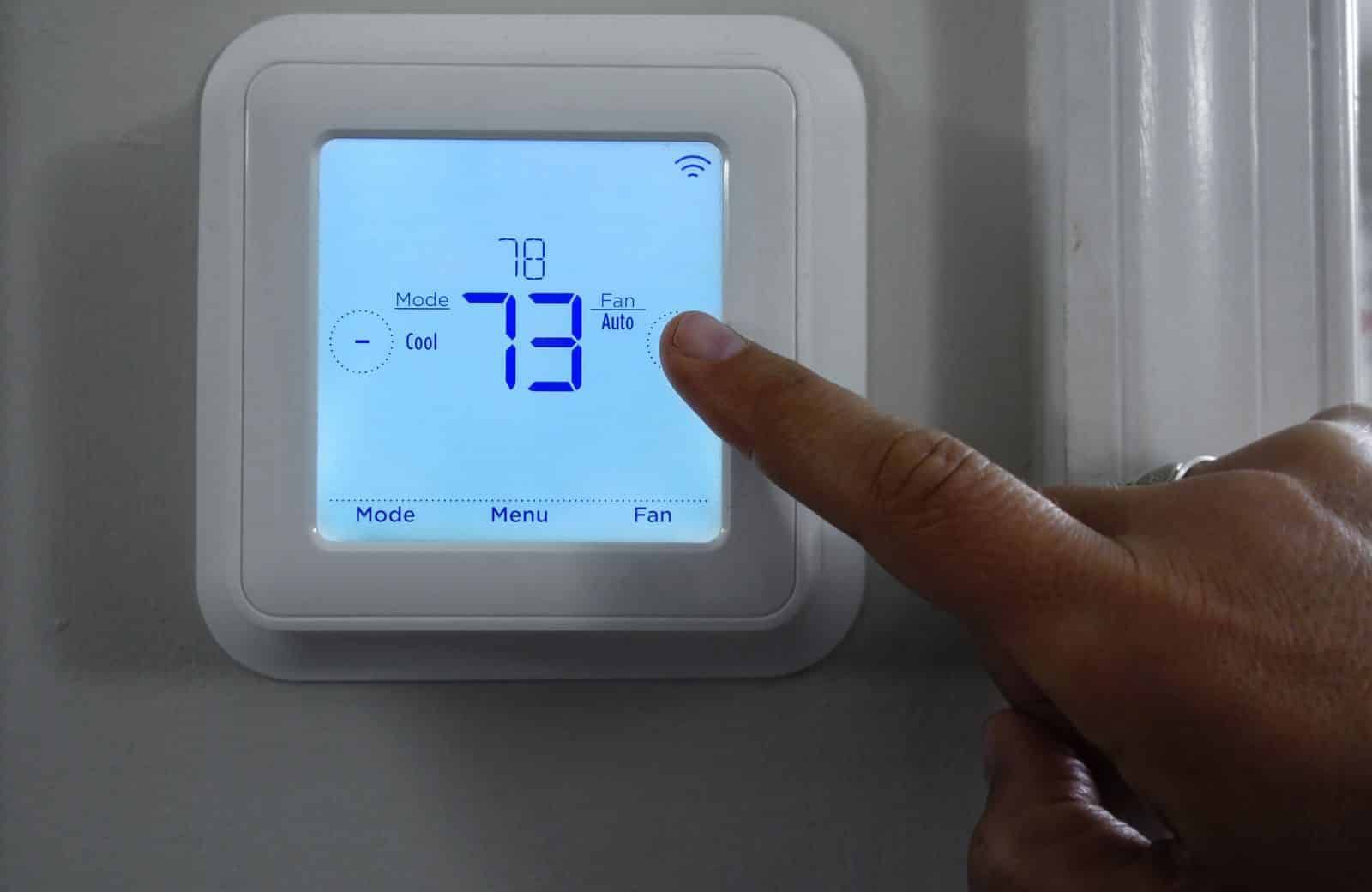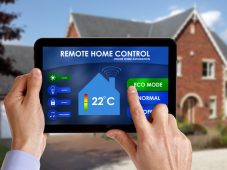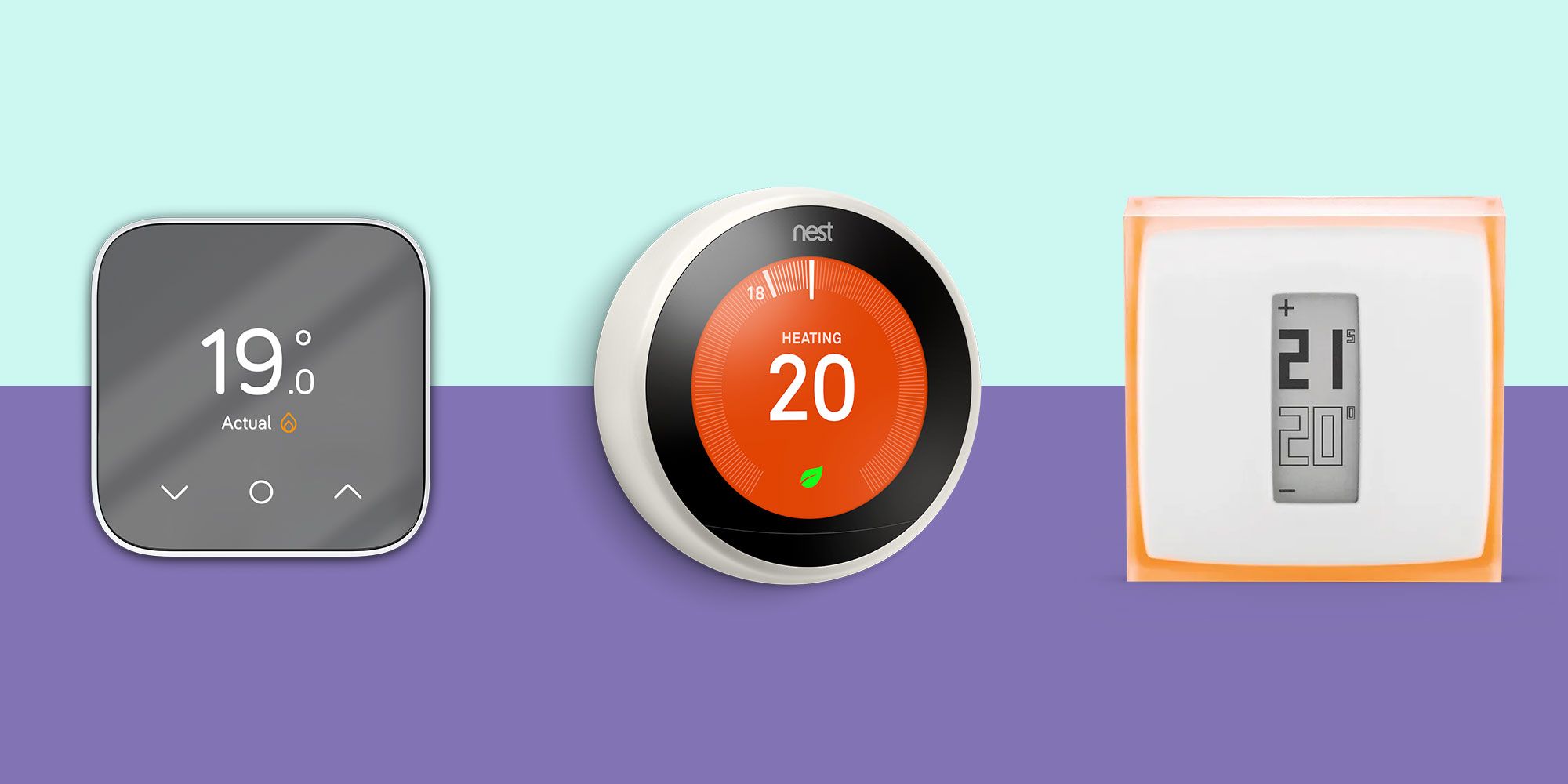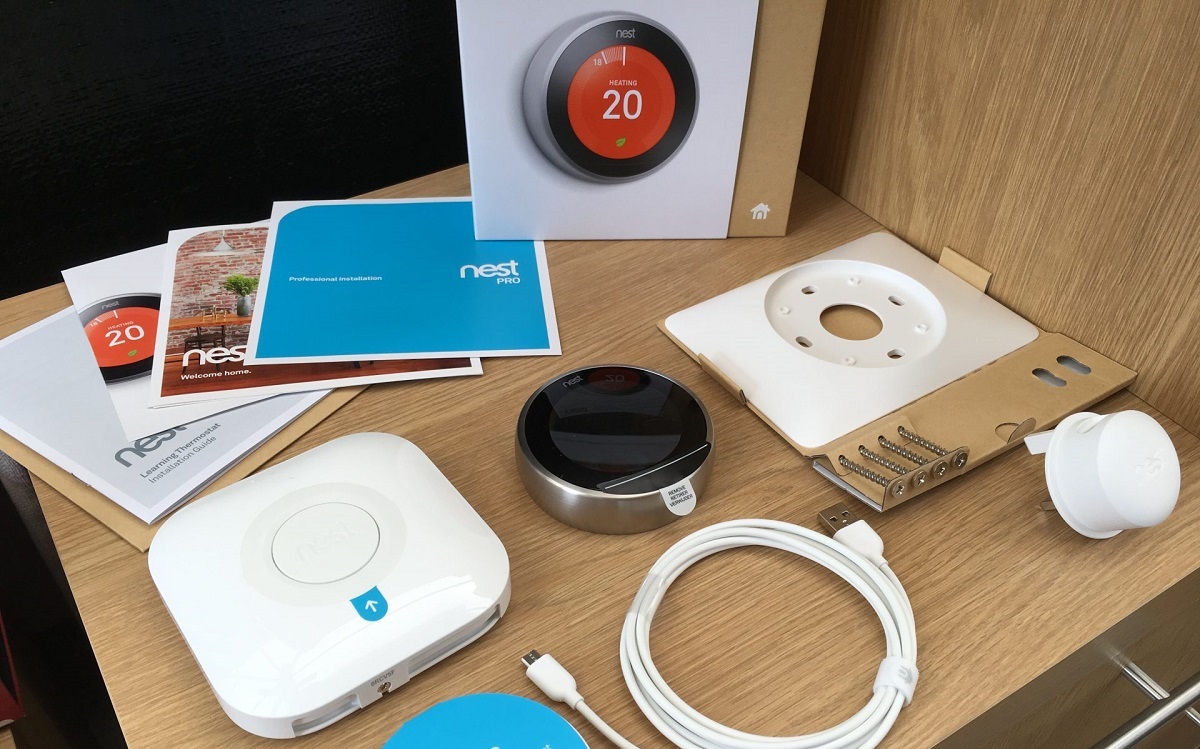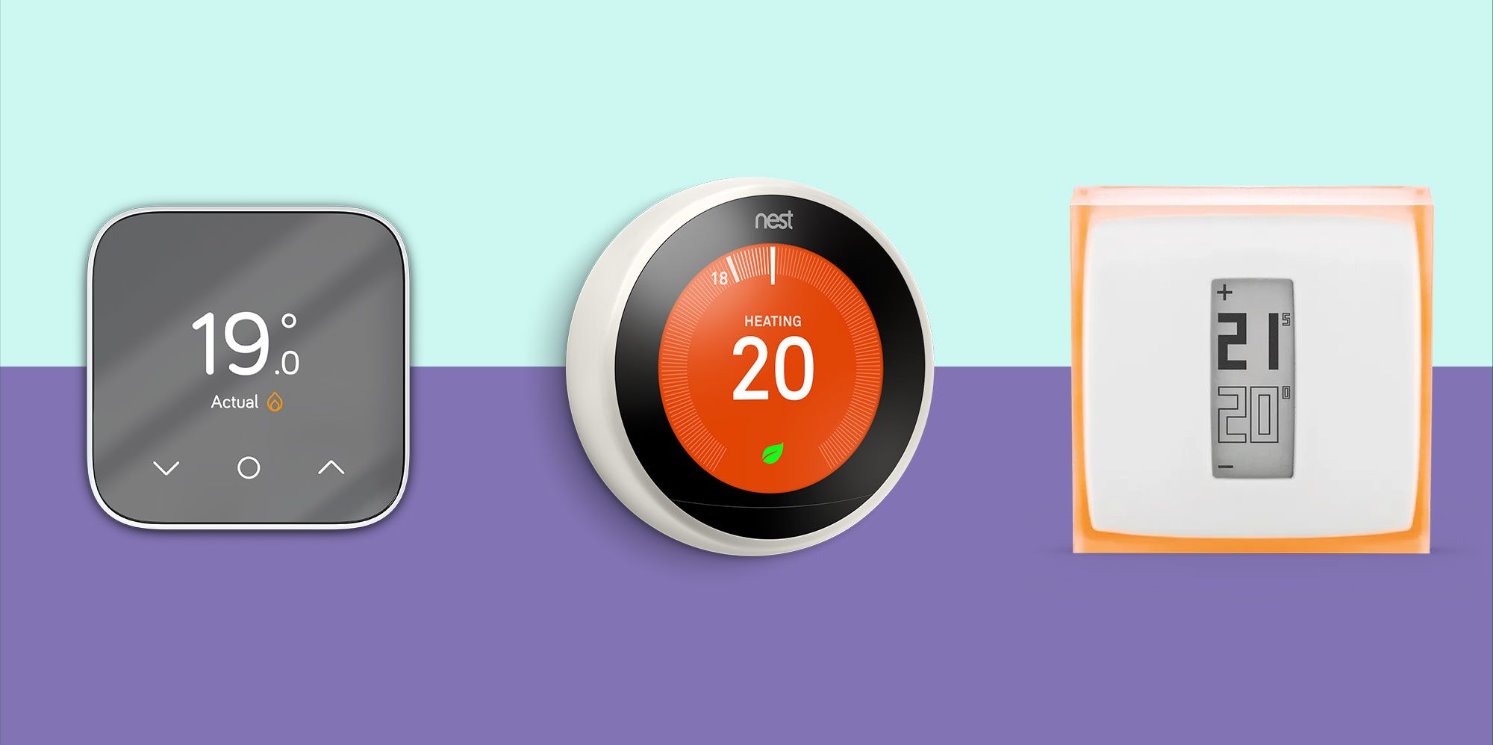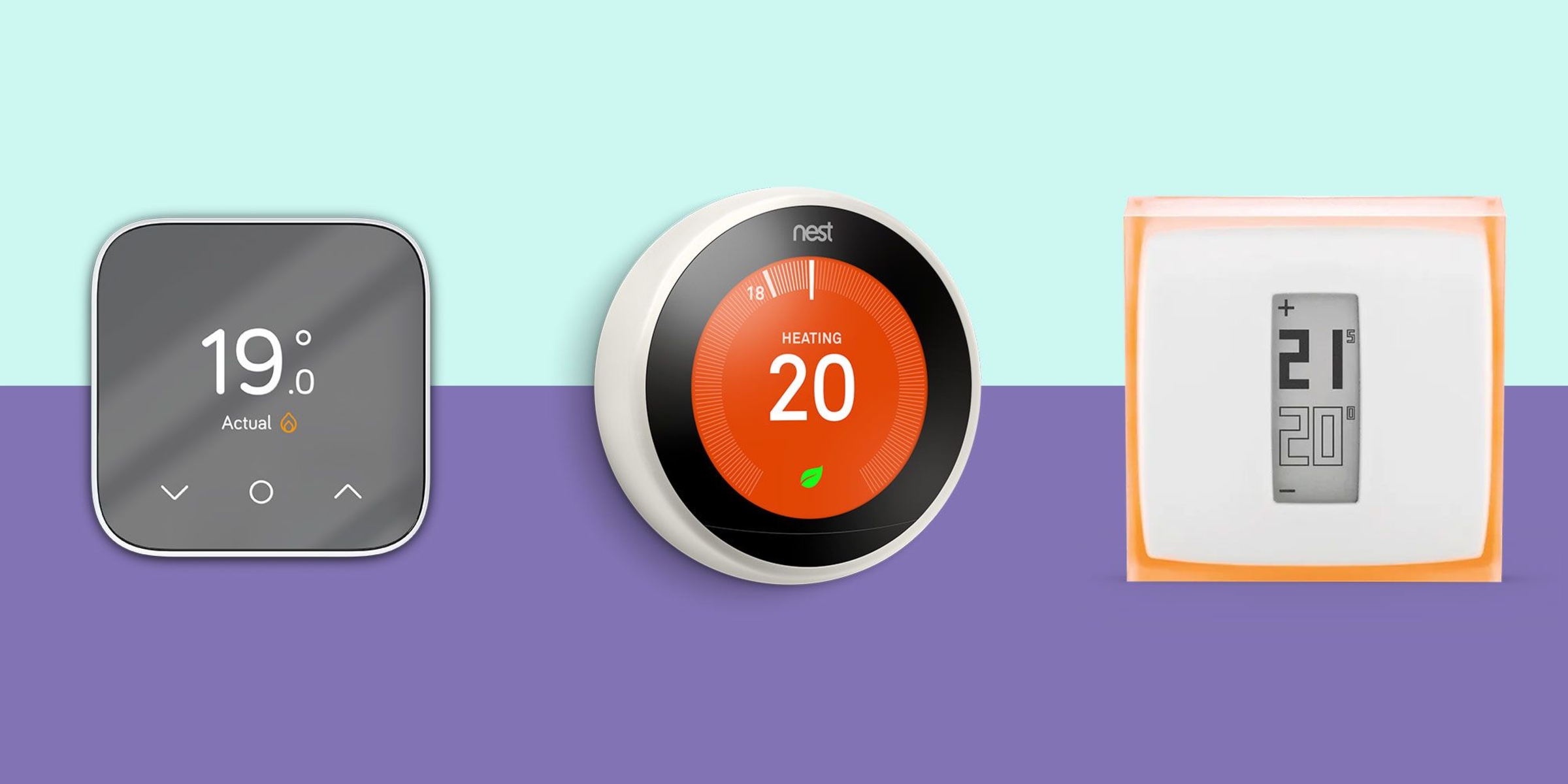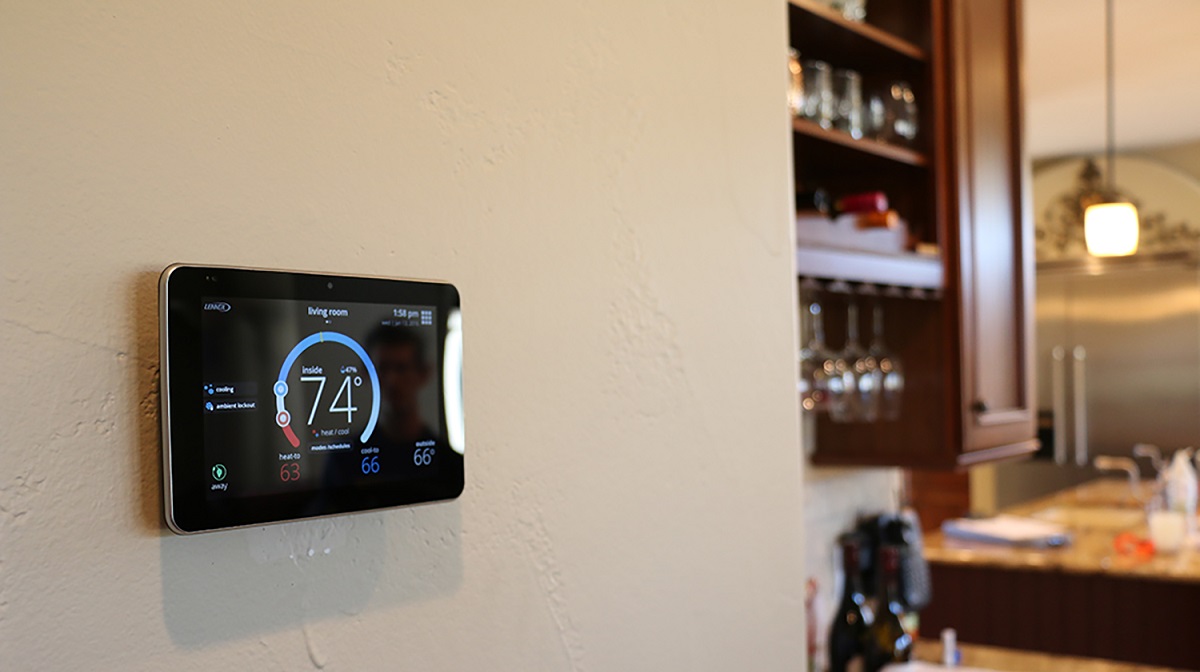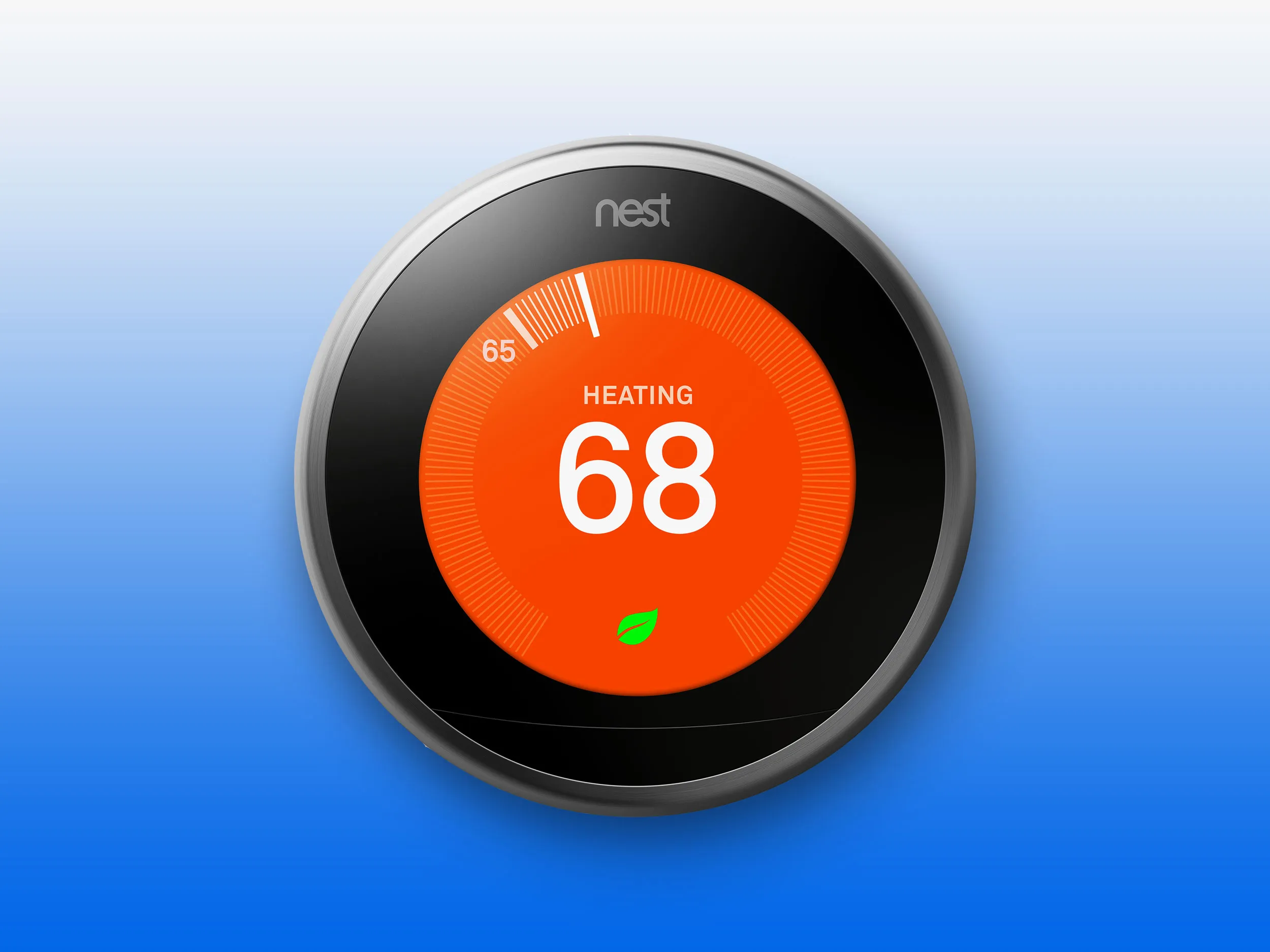Introduction
Welcome to the world of smart home technology, where every aspect of your home can be easily controlled and optimized for efficiency and convenience. Two popular devices in this realm are smart thermostats and Wi-Fi thermostats. While both options can greatly improve your HVAC system’s performance, it’s important to understand the differences between them to make an informed decision.
A smart thermostat and a Wi-Fi thermostat are both advanced devices that offer remote control and energy-saving capabilities. However, they differ in terms of functionality and features. In this article, we will explore the distinctions between these two types of thermostats, their key features, installation processes, energy efficiency benefits, compatibility with HVAC systems, cost comparison, user interface, controls, integration with smart home systems, and remote access and control.
By the end of this article, you will have a clear understanding of the advantages and limitations of both smart thermostats and Wi-Fi thermostats, allowing you to choose the right option for your home and HVAC system.
Definition of a Smart Thermostat
A smart thermostat is a cutting-edge device that connects to your home’s HVAC system and allows you to control and monitor the temperature and settings remotely using your smartphone, tablet, or computer. It uses advanced sensors, algorithms, and machine learning to learn your schedule and preferences, automatically adjusting the temperature to optimize comfort and energy efficiency.
One of the key features of a smart thermostat is its ability to learn from your behavior and make intelligent adjustments accordingly. For example, if you typically adjust the temperature before going to bed, a smart thermostat will learn this pattern and automatically make the adjustment for you.
Smart thermostats also offer a wide range of features and functionalities beyond temperature control. They can provide energy usage reports, analyze your HVAC system’s performance, and offer suggestions for improving energy efficiency. Some models even have geofencing capabilities, which detect when you’re away from home and adjust the temperature accordingly to save energy.
Furthermore, smart thermostats often come with compatibility with other smart home devices and platforms, allowing you to integrate them into a larger smart home ecosystem. This means you can control your thermostat through voice commands using virtual assistants like Amazon Alexa or Google Assistant, or even automate it to work in tandem with other devices such as smart lights or door locks.
In summary, a smart thermostat is a technologically advanced device that offers remote temperature control, learning capabilities, energy efficiency features, and integration with other smart home devices.
Definition of a Wi-Fi Thermostat
A Wi-Fi thermostat is a type of thermostat that incorporates wireless connectivity to enable remote control and monitoring of your HVAC system via an internet connection. Unlike traditional thermostats, which require physical interaction to adjust the temperature, a Wi-Fi thermostat allows you to make changes through a dedicated mobile app or a web portal, giving you the ability to control your HVAC system from anywhere in the world.
One of the main features of a Wi-Fi thermostat is the ability to connect to your home’s Wi-Fi network. This connectivity enables seamless communication between the thermostat, your mobile device, and the internet. By utilizing the internet, you can remotely adjust and monitor the temperature, set heating and cooling schedules, and receive real-time updates on your HVAC system’s performance.
Furthermore, Wi-Fi thermostats often come with additional features and benefits. They can provide energy usage statistics and recommendations, allowing you to track your energy consumption and make informed decisions on how to optimize efficiency. Some models may also have geofencing capabilities, which use your smartphone’s location to adjust the temperature based on whether you are at home or away.
Another advantage of Wi-Fi thermostats is their compatibility with smart home ecosystems. They can be integrated with other smart devices, such as smart lights or security systems, allowing for seamless automation and control of your entire home. For example, you can set up routines where your thermostat adjusts the temperature when you leave the house or when you go to bed, all triggered by the status of other smart devices.
In summary, a Wi-Fi thermostat is a thermostat that connects to your home’s Wi-Fi network, enabling remote control, energy monitoring, and integration with other smart home devices.
Key Features of a Smart Thermostat
Smart thermostats come with a range of features that elevate them above traditional thermostats. These features provide greater control, convenience, and energy efficiency. Here are some of the key features that you can expect from a smart thermostat:
- Remote Control: One of the primary advantages of a smart thermostat is the ability to control and monitor your HVAC system remotely. Through a mobile app or web interface, you can adjust the temperature, change settings, and view real-time data from anywhere, giving you the flexibility to manage your home’s climate even when you’re not physically present.
- Learning Capabilities: Smart thermostats are designed to learn your schedule and preferences over time. They use algorithms and machine learning to analyze your usage patterns and make automatic adjustments to optimize comfort and energy efficiency. This feature eliminates the need for manual programming and ensures that your home is always at the desired temperature.
- Energy Monitoring: Many smart thermostats provide energy monitoring features, allowing you to track your energy usage and identify opportunities for conservation. They offer detailed reports and insights on your HVAC system’s performance, helping you make informed decisions to reduce energy waste and lower utility bills.
- Integration with Smart Home Devices: Smart thermostats often come with compatibility with other smart home devices and platforms. This integration allows you to control your thermostat through voice commands using virtual assistants like Amazon Alexa or Google Assistant. You can also create automation routines that synchronize your thermostat with other devices, such as adjusting the temperature when you arm your security system or turning off the HVAC system when you leave the house.
- Scheduling and Geofencing: Smart thermostats offer advanced scheduling capabilities, allowing you to set customized heating and cooling schedules based on your daily routines. Some models also include geofencing technology, which uses your smartphone’s location to automatically adjust the temperature when you leave or arrive at home. These features ensure optimal comfort and energy efficiency without requiring manual intervention.
In summary, key features of a smart thermostat include remote control, learning capabilities, energy monitoring, integration with smart home devices, scheduling, and geofencing. These features work together to enhance comfort, improve energy efficiency, and simplify the management of your home’s HVAC system.
Key Features of a Wi-Fi Thermostat
Wi-Fi thermostats offer numerous features that enhance convenience, energy efficiency, and control of your HVAC system. These features set them apart from traditional thermostats and provide several benefits to homeowners. Here are the key features of a Wi-Fi thermostat:
- Remote Access and Control: The primary feature of a Wi-Fi thermostat is its ability to be controlled remotely through a mobile app or web portal. This allows you to adjust and monitor your thermostat settings from anywhere using your smartphone, tablet, or computer. Whether you’re at work, on vacation, or simply in another room, you can easily control the temperature in your home, ensuring maximum comfort and convenience.
- Scheduling and Customization: Wi-Fi thermostats allow you to create customized heating and cooling schedules based on your daily routines. You can program specific temperature settings for different times of the day, ensuring optimal comfort and energy efficiency. Some models even offer advanced scheduling options, such as vacation mode or temporary overrides for unexpected changes in your routine.
- Energy Monitoring and Reporting: Wi-Fi thermostats provide energy monitoring features that enable you to track and analyze your HVAC system’s energy consumption. You can access detailed reports and insights that show how your energy usage fluctuates throughout the day, week, or month. With these insights, you can identify opportunities to save energy and reduce utility costs.
- Integration with Smart Home Devices: Many Wi-Fi thermostats are designed to integrate seamlessly with other smart home devices and platforms. This compatibility allows you to control your thermostat using voice commands through virtual assistants like Amazon Alexa or Google Assistant. You can also integrate it into your smart home ecosystem, enabling automation and synchronization with other devices such as smart lights, door locks, or security systems.
- Smart Alerts and Notifications: Wi-Fi thermostats can send you alerts and notifications regarding changes in temperature, power outages, maintenance reminders, or filter replacements. These notifications help you keep your HVAC system running optimally and ensure that you’re aware of any issues that require attention.
- Geofencing Technology: Some Wi-Fi thermostats are equipped with geofencing capabilities, which use your smartphone’s location to automatically adjust the temperature based on whether you’re at home or away. This feature helps save energy by ensuring that your system doesn’t waste energy heating or cooling an empty home.
In summary, key features of a Wi-Fi thermostat include remote access and control, scheduling and customization, energy monitoring and reporting, integration with smart home devices, smart alerts and notifications, and geofencing technology. These features provide enhanced convenience, energy efficiency, and control over your HVAC system.
Energy Efficiency Benefits of Smart Thermostats
Smart thermostats offer several energy efficiency benefits that can help you save money on your heating and cooling costs while reducing your environmental footprint. These benefits stem from the advanced features and technology incorporated into smart thermostat systems. Here are some of the energy efficiency benefits:
- Optimized Temperature Control: Smart thermostats use algorithms and machine learning to analyze your usage patterns and preferences. With this information, they can automatically adjust the temperature to optimize comfort while minimizing energy waste. They adapt to your schedule, ensuring that your home is at the desired temperature only when needed, rather than running at full capacity continuously.
- Learning Capabilities: Smart thermostats have the ability to learn from your behaviors and make intelligent adjustments accordingly. As they understand your schedule and preferences, they can automatically adjust the temperature settings based on your regular routines. This eliminates the need for manual programming and ensures energy efficiency by avoiding unnecessary HVAC operation.
- Remote Access and Control: Being able to control your thermostat remotely allows you to manage your HVAC system, even when you’re away from home. This means you can adjust the temperature before you arrive back or turn off the system if you forgot to do so before leaving. By avoiding unnecessary heating or cooling, remote access helps to conserve energy and reduce your utility bills.
- Energy Usage Monitoring: Many smart thermostats provide energy monitoring features that allow you to track and analyze your energy usage. They provide detailed reports and insights into how and when your HVAC system consumes energy. With this information, you can identify areas of inefficiency and make adjustments to optimize energy usage and reduce waste.
- Smart Integrations: Smart thermostats often integrate with other smart home devices, such as occupancy sensors, smart lights, or window coverings. These integrations enable a coordinated effort to optimize energy efficiency. For example, if the occupancy sensor detects no one in a room, the thermostat can adjust the temperature accordingly, saving energy in unoccupied areas.
- Geofencing Technology: Some smart thermostats come with geofencing capabilities that detect when you leave or arrive at home through your smartphone’s location. By using geofencing, the thermostat can automatically adjust the temperature based on whether you’re home or not, thus preventing unnecessary heating or cooling when no one is around.
In summary, smart thermostats offer energy efficiency benefits through optimized temperature control, learning capabilities, remote access and control, energy usage monitoring, smart integrations, and geofencing technology. By leveraging these features, you can reduce your energy consumption, lower your utility bills, and contribute to a greener and more sustainable environment.
Energy Efficiency Benefits of Wi-Fi Thermostats
Wi-Fi thermostats offer a variety of energy efficiency benefits, helping homeowners reduce their energy consumption and lower their utility bills. With advanced features and remote control capabilities, Wi-Fi thermostats provide greater control and optimization of HVAC systems. Here are some of the energy efficiency benefits of Wi-Fi thermostats:
- Remote Access and Control: One of the primary advantages of Wi-Fi thermostats is the ability to control and monitor your HVAC system remotely. Through a mobile app or web portal, you can adjust the temperature settings from anywhere, ensuring that your home is being heated or cooled efficiently when needed. This feature prevents unnecessary energy consumption when you’re away from home or when your schedule changes.
- Scheduling and Customization: Wi-Fi thermostats allow you to create personalized schedules for your heating and cooling needs based on your routine. By setting specific temperature levels for different times of the day, you can ensure that your HVAC system operates efficiently and only when necessary. This feature eliminates the need for constant manual adjustments and delivers energy savings by avoiding overuse during periods when heating or cooling isn’t required.
- Energy Monitoring and Reporting: Many Wi-Fi thermostats provide energy monitoring features that give you insight into your HVAC system’s energy consumption. Detailed reports and analytics allow you to track usage patterns and identify areas where energy waste can be reduced. Armed with this information, you can make informed decisions to optimize your energy efficiency and potentially reduce your energy bills.
- Smart Home Integration: Wi-Fi thermostats often integrate with other smart home devices and platforms, such as smart lights, occupancy sensors, or weather updates. These integrations enable seamless automation and coordination among different devices, resulting in energy efficiency improvements. For example, the thermostat can adjust the temperature based on occupancy information from motion sensors or leverage weather data to optimize heating and cooling settings.
- Geofencing Technology: Some Wi-Fi thermostats feature geofencing capabilities, which use your smartphone’s location to detect when you’re leaving or arriving home. By automatically adjusting the temperature based on your proximity, the thermostat can ensure that energy isn’t wasted when no one is home. This feature saves energy by avoiding unnecessary heating or cooling of unoccupied spaces.
- Smart Alerts and Notifications: Wi-Fi thermostats can provide alerts and notifications regarding system performance, temperature fluctuations, or reminders for filter replacement. These notifications help you stay informed and take necessary actions to maintain optimal energy efficiency. Regular maintenance, timely filter changes, and addressing system issues promptly contribute to better energy efficiency and longevity of your HVAC system.
In summary, Wi-Fi thermostats offer energy efficiency benefits through remote access and control, scheduling capabilities, energy monitoring, smart home integration, geofencing technology, as well as smart alerts and notifications. These features allow for precise control and optimization of your HVAC system, resulting in energy savings, reduced environmental impact, and increased comfort.
Compatibility with HVAC Systems
Compatibility with HVAC systems is an important consideration when selecting a thermostat, whether it’s a smart thermostat or a Wi-Fi thermostat. Both types of thermostats are designed to work with a wide range of HVAC systems, but it is crucial to ensure compatibility to ensure seamless integration and optimal performance. Here are some aspects to consider:
- Heating and Cooling Systems: Smart thermostats and Wi-Fi thermostats are compatible with most common heating and cooling systems, including central heating and air conditioning, heat pumps, dual fuel systems, and more. However, it’s important to verify compatibility for specific HVAC equipment, especially if you have a specialized or older system.
- Compatibility Check: Before purchasing a thermostat, manufacturers often provide compatibility check tools on their websites. These tools allow you to enter information about your HVAC system, such as the type of system and wiring configuration, to determine if the thermostat is compatible. It is recommended to use these tools or consult with an HVAC professional if you have any doubts.
- Additional Features: Some advanced features of smart thermostats, such as variable fan speed control, humidity control, or zoning, may require specific HVAC system compatibility. If you are interested in utilizing these features, it is essential to confirm that your specific HVAC system supports them.
- Wiring Compatibility: The wiring of your existing thermostat should also be considered. Wi-Fi thermostats and smart thermostats typically require a C-wire (common wire) for power. However, some models are designed to work without a C-wire by utilizing power stealing or using alternative power sources like batteries. Ensure that your thermostat choice aligns with the wiring available in your home.
- Professional Installation: In some cases, complex HVAC systems or thermostat installations may require professional assistance. If you are unsure about compatibility or face challenges during installation, it is recommended to consult with a trained HVAC technician to ensure proper installation and system compatibility.
In summary, smart thermostats and Wi-Fi thermostats are generally compatible with a wide range of HVAC systems. However, it is important to verify compatibility for your specific system to ensure seamless integration and optimal performance. Utilize compatibility check tools provided by manufacturers or consult with an HVAC professional to ensure that your chosen thermostat will work effectively with your HVAC system.
Installation Process for Smart Thermostats
The installation process for smart thermostats may vary depending on the specific model and your existing HVAC system. While some homeowners may choose to install the thermostat themselves, it is recommended to hire a professional HVAC technician if you are unsure or uncomfortable with the installation process. Here are the general steps involved in installing a smart thermostat:
- Turn off Power: Before starting any installation, it is crucial to turn off the power to your HVAC system at the main circuit breaker. This ensures your safety during the installation process.
- Remove Existing Thermostat: Carefully remove the cover of your existing thermostat and unscrew it from the wall plate. Take note of the wiring connections and label them for future reference during the installation of the smart thermostat.
- Mount the New Wall Plate: Install the new wall plate that comes with your smart thermostat in the same location as the previous thermostat. Use screws or adhesive for secure mounting, ensuring that the plate is level and firmly in place.
- Connect the Wiring: Follow the manufacturer’s instructions to connect the wiring from your HVAC system to the corresponding terminals on the new wall plate of the smart thermostat. Double-check the labels and ensure that each wire is securely connected.
- Attach the Smart Thermostat: Gently attach the smart thermostat to the wall plate, aligning it properly and ensuring that it sits flush against the wall. Some models may require a special mounting bracket or additional steps for installation, so refer to the manufacturer’s instructions for specific details.
- Power On and Configure: After completing the physical installation, restore power to your HVAC system at the circuit breaker. The smart thermostat will power on, and you can proceed with configuring it by following the instructions provided with the device.
- Connect to Wi-Fi: Using the smart thermostat’s interface, connect it to your home’s Wi-Fi network. Follow the instructions on the screen and enter the necessary information to establish a connection.
- Download and Set Up the App: Install the manufacturer’s app on your smartphone or tablet, and follow the instructions to pair it with the smart thermostat. This will enable you to remotely control and monitor your HVAC system.
- Test the Functionality: Once everything is set up, test the functionality of the smart thermostat by adjusting the temperature settings through the app or directly on the device. Ensure that the HVAC system responds accordingly and that all features and settings are working as intended.
While these steps provide a general overview of the installation process, it’s important to refer to the specific instructions provided by the manufacturer of your smart thermostat. If you are unsure about any aspect of the installation, it is recommended to consult with a professional HVAC technician for assistance.
Installation Process for Wi-Fi Thermostats
The installation process for Wi-Fi thermostats can vary depending on the specific model and your existing HVAC system. It’s important to carefully follow the manufacturer’s instructions provided with your thermostat. Here are the general steps involved in installing a Wi-Fi thermostat:
- Turn off Power: Begin by turning off the power to your HVAC system at the main circuit breaker. This step is crucial for your safety during the installation process.
- Remove Existing Thermostat: Carefully remove the cover of your existing thermostat and disconnect it from the wall plate. Take note of the wiring connections and label them for reference during the installation of the Wi-Fi thermostat.
- Mount the New Wall Plate: Install the new wall plate that comes with your Wi-Fi thermostat in the same location as the previous thermostat. Use screws or adhesive to secure the plate to the wall, ensuring it is level and firmly attached.
- Connect the Wiring: Follow the manufacturer’s instructions to connect the wiring from your HVAC system to the corresponding terminals on the new wall plate of the Wi-Fi thermostat. Double-check the labels and ensure that each wire is securely connected.
- Attach the Wi-Fi Thermostat: Carefully attach the Wi-Fi thermostat to the wall plate, aligning it properly and ensuring that it sits flush against the wall. Some models may require specific mounting brackets or additional steps for installation, so be sure to refer to the manufacturer’s instructions for specific details.
- Power On and Configure: Once the physical installation is complete, restore power to your HVAC system at the circuit breaker. The Wi-Fi thermostat will power on and prompt you to configure its settings. Follow the on-screen instructions to set the date, time, and other initial settings.
- Connect to Wi-Fi: Using the Wi-Fi thermostat’s interface, connect it to your home’s Wi-Fi network. Follow the instructions on the screen and enter the necessary information to establish a connection. This step is crucial for enabling remote access and control of the thermostat through a mobile app or web portal.
- Download and Set Up the App: Install the manufacturer’s app on your smartphone or tablet and follow the instructions to pair it with the Wi-Fi thermostat. This will allow you to remotely control and monitor your HVAC system, set schedules, and receive notifications.
- Test the Functionality: Once the installation and setup are complete, test the functionality of the Wi-Fi thermostat. Adjust the temperature settings through the app or directly on the device, and ensure that the HVAC system responds accordingly. Verify that all features, such as scheduling and remote access, are working as intended.
While these steps provide a general overview of the installation process, it’s important to refer to the specific instructions provided by the manufacturer of your Wi-Fi thermostat. If you are unsure about any aspect of the installation, it is recommended to consult with a professional HVAC technician for guidance and assistance.
Cost Comparison: Smart Thermostat vs. Wi-Fi Thermostat
When considering the cost of a smart thermostat or a Wi-Fi thermostat, there are a few factors to take into account. These include the upfront cost of the thermostat itself, any additional installation expenses, and long-term energy savings. Let’s compare the costs of smart thermostats and Wi-Fi thermostats:
Upfront Cost: Smart thermostats typically have a higher upfront cost compared to Wi-Fi thermostats. This is because smart thermostats often come with more advanced features and technology, such as learning capabilities, energy monitoring, and seamless integration with other smart home devices. Wi-Fi thermostats, although still technologically advanced, usually have a more basic set of features, making them more budget-friendly.
Installation: Installation costs can vary depending on the complexity of your HVAC system and your comfort level with DIY projects. Both smart thermostats and Wi-Fi thermostats can often be installed by homeowners themselves, without the need for professional assistance. However, if you are unfamiliar with HVAC wiring or unsure about the process, it is recommended to hire a professional technician, which may incur additional costs.
Long-Term Energy Savings: Both types of thermostats can offer long-term energy savings, but the extent of those savings may vary. Smart thermostats have advanced features like learning capabilities and personalized scheduling, which can optimize your HVAC system’s energy usage. They can adapt to your routines and automatically adjust temperature settings for maximum efficiency. Wi-Fi thermostats, on the other hand, offer remote access and control features, allowing you to make real-time adjustments to conserve energy when you’re away from home. The energy savings achieved through these smart features can lead to reduced utility bills over time.
Overall Value: While smart thermostats have a higher upfront cost, their advanced features and energy-saving capabilities can provide significant long-term value. They offer more customization options, learning algorithms, and integration with other smart home devices, which can enhance comfort and convenience while providing energy efficiency benefits. Wi-Fi thermostats, although less expensive, still offer remote access and control features, making them a convenient and cost-effective option for many homeowners.
Ultimately, the choice between a smart thermostat and a Wi-Fi thermostat depends on your budget, desired features, and long-term energy savings goals. It’s important to consider your specific needs and evaluate the potential return on investment that each option offers. Regardless of which type of thermostat you choose, both can contribute to energy savings, increased home comfort, and improved control over your HVAC system.
User Interface and Controls
The user interface and controls of a thermostat are essential for an intuitive and user-friendly experience. Both smart thermostats and Wi-Fi thermostats offer modern interfaces that make it easy for users to interact with their HVAC systems. Let’s explore the user interface and controls of these thermostats:
Smart Thermostats: Smart thermostats are known for their sleek and interactive interfaces. They typically feature high-resolution touchscreens, displaying temperature readings, settings, and other relevant information in a visually appealing manner. The user interface is designed to be intuitive, allowing for easy navigation and control via swipes, taps, and on-screen menus. Some smart thermostats also have additional physical buttons or dials for manual adjustments. Additionally, smart thermostats often offer integration with mobile apps, giving users the ability to control and monitor their HVAC systems remotely from their smartphones or tablets. These apps provide a user-friendly interface with settings and controls that mimic the on-device interface, allowing for convenient and seamless control.
Wi-Fi Thermostats: Wi-Fi thermostats generally have simplified interfaces that prioritize usability and efficiency. They often feature digital displays with clear temperature readings and straightforward menus for setting temperature preferences and scheduling. Many Wi-Fi thermostats include physical buttons or touch-sensitive areas for users to make manual adjustments easily. The primary user interaction for a Wi-Fi thermostat occurs through a connected mobile app or a web portal. The app provides a user-friendly interface where users can adjust temperature settings, set schedules, view energy usage data, and receive notifications. The simplicity and accessibility of the user interface make it easy for homeowners to control their HVAC systems remotely and make quick adjustments when needed.
Regardless of the specific thermostat type, user interfaces and controls are designed to empower homeowners with precise control over their heating and cooling systems. They aim to provide a seamless experience, allowing for easy temperature adjustments, schedule customization, and access to energy usage data.
It’s important to note that the user interface and controls may vary between different models and brands of thermostats. Some may offer more advanced features, such as voice control through virtual assistants, while others may focus on a more simplified experience. When selecting a thermostat, consider the level of control and user experience that aligns with your preferences and needs.
Integration with Smart Home Systems
Integration with smart home systems is a key feature that sets smart thermostats and Wi-Fi thermostats apart from traditional thermostats. Both types of thermostats offer extensive integration capabilities, allowing homeowners to create a seamless and interconnected smart home ecosystem. Let’s explore the integration options offered by these thermostats:
Smart Thermostats: Smart thermostats are designed to work in harmony with other smart home devices, enabling full integration and automation. They often support popular smart home platforms like Amazon Alexa, Google Assistant, Apple HomeKit, and more. Through these integrations, users can control their smart thermostats with voice commands and incorporate them into broader routines and scenes. For example, you can create a routine that turns off the lights, locks the doors, and adjusts the thermostat to an energy-saving temperature when you leave the house. Additionally, smart thermostats can be integrated with other devices such as smart lights, motion sensors, and door/window sensors, allowing for coordinated actions between different devices for enhanced comfort, convenience, and energy efficiency.
Wi-Fi Thermostats: Wi-Fi thermostats also provide integration capabilities, albeit typically with a narrower scope compared to smart thermostats. They can integrate with popular smart home platforms and voice assistants like Amazon Alexa and Google Assistant. This allows homeowners to control their Wi-Fi thermostats using voice commands and incorporate them into routines and scenes. Although the integration options may be somewhat limited compared to smart thermostats, Wi-Fi thermostats still offer seamless coordination with other smart devices to create a more connected and efficient home environment.
Integration with smart home systems enhances the functionality and convenience of thermostats by allowing users to control and monitor their HVAC systems alongside other smart devices. Through unified platforms or voice assistants, homeowners can create personalized experiences that align with their daily routines and preferences.
It’s worth mentioning that the specific integration capabilities and compatibility may vary depending on the brand and model of the thermostat and the smart home ecosystem you use. Before purchasing a thermostat, it’s important to ensure that it supports the smart home platform and devices you plan to integrate it with.
In summary, both smart thermostats and Wi-Fi thermostats offer integration with smart home systems, enabling users to create a fully connected and automated home environment. While smart thermostats often provide more extensive integration options, Wi-Fi thermostats still offer significant control and coordination with other devices, enhancing comfort, convenience, and energy efficiency in the home.
Remote Access and Control
Remote access and control is a prominent feature of both smart thermostats and Wi-Fi thermostats, transforming the way homeowners interact with their HVAC systems. By providing the ability to control and monitor the thermostat from anywhere, these thermostats offer convenience, flexibility, and energy-saving opportunities. Let’s explore the benefits and functionality of remote access and control:
Smart Thermostats: Smart thermostats offer advanced remote access and control capabilities through dedicated mobile apps or web interfaces. Once connected to your home’s Wi-Fi network, you can use the app on your smartphone, tablet, or computer to adjust the temperature, set schedules, view energy usage data, and receive notifications. This remote control allows you to make precise temperature adjustments without physically being near the thermostat. Whether you’re at work, on vacation, or simply in another room, you have the power to manage your HVAC system and ensure optimal comfort and energy efficiency. Smart thermostats also enable automation and learning capabilities that adapt to your routines and preferences, further enhancing convenience and energy-saving potential.
Wi-Fi Thermostats: Wi-Fi thermostats also provide remote access and control, enabling you to adjust and monitor your HVAC system from anywhere with internet connectivity. Through their companion mobile apps or web portals, you can remotely manage your thermostat settings, create schedules, and receive important alerts and notifications. Whether you’re away on a business trip, stuck in traffic, or even lying in bed, you have the flexibility to control your home’s temperature to your liking. This feature helps you conserve energy by allowing you to adjust the temperature settings when you’re not physically at home, reducing unnecessary heating or cooling.
Remote access and control offer a range of benefits to homeowners:
- Convenience: Remote access allows for seamless control of your HVAC system, offering convenience and flexibility. You can easily make adjustments or change temperature settings without being physically present near the thermostat, enhancing your overall comfort and convenience.
- Energy Savings: With remote control, you can optimize energy usage by adjusting the temperature settings based on your needs and occupancy. For example, you can increase the temperature during the day when the house is empty and lower it before your return. This personalized control helps save energy and reduce utility bills.
- Peace of Mind: Remote access allows you to monitor and manage your HVAC system even when you’re away. You can ensure that your home is at a comfortable temperature upon arrival or receive alerts and notifications if there are any issues with the system.
- Customization: Remote access allows you to create and adjust personalized schedules for your HVAC system. Whether you have a consistent routine or constantly changing schedules, you can easily customize the temperature settings to align with your lifestyle.
Whether you opt for a smart thermostat or a Wi-Fi thermostat, remote access and control empower homeowners to manage their HVAC systems with ease, enhance energy efficiency, and enjoy greater comfort and convenience.
Conclusion
In conclusion, both smart thermostats and Wi-Fi thermostats offer advanced features and benefits that enhance the control, convenience, and energy efficiency of your HVAC system. Understanding the differences between these two types of thermostats can help you make an informed decision based on your specific needs and preferences.
A smart thermostat is a technologically advanced device that provides remote control, learning capabilities, energy efficiency features, and integration with other smart home devices. With their sophisticated algorithms and machine learning capabilities, smart thermostats can adapt to your schedule, optimize comfort, and reduce energy waste.
On the other hand, Wi-Fi thermostats provide remote access and control through a mobile app or web portal, enabling homeowners to adjust temperature settings, create schedules, and receive real-time updates from anywhere. While they may offer fewer advanced features compared to smart thermostats, Wi-Fi thermostats still provide convenience, energy-saving opportunities, and seamless integration with other smart home devices.
Both smart thermostats and Wi-Fi thermostats offer the advantages of energy monitoring, compatibility with various HVAC systems, and the capability to help reduce utility bills. They provide the flexibility to adjust temperature settings remotely, customize schedules, and receive important notifications about system performance.
Therefore, when choosing between a smart thermostat and a Wi-Fi thermostat, consider factors such as upfront costs, desired features, installation process, compatibility with your HVAC system, and integration options with other smart home devices. Assess your priorities, budget, and long-term energy-saving goals to select the thermostat that best aligns with your needs.
Ultimately, whether you opt for a smart thermostat or a Wi-Fi thermostat, both options provide significant benefits and can greatly improve your home’s comfort and energy efficiency. Embrace the power of smart technology and take control of your HVAC system to create a more comfortable, convenient, and sustainable living environment.







